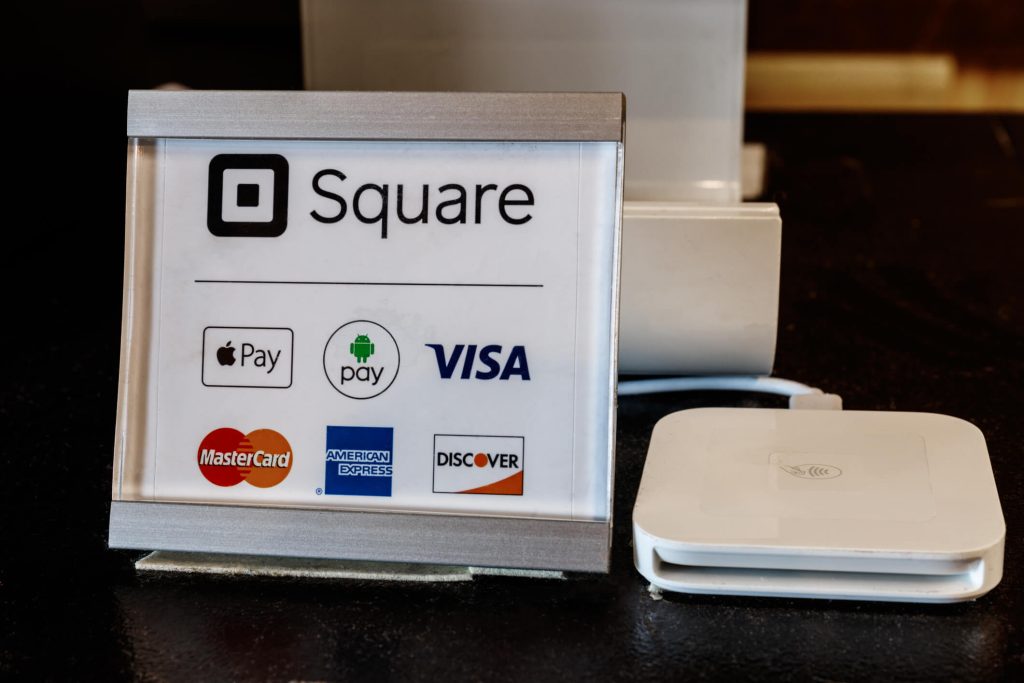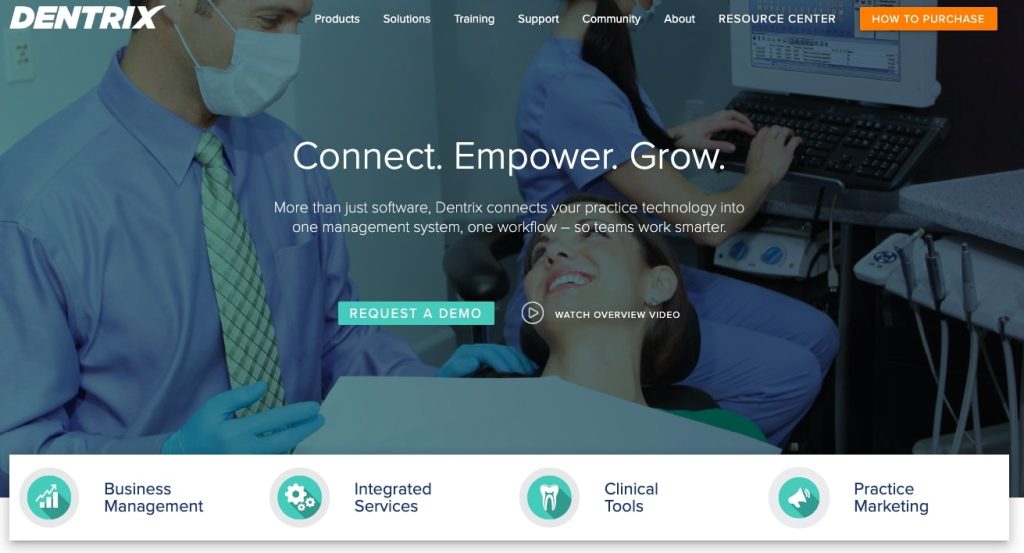With the increasing demand for convenient and secure payment options, dental practices need to stay up-to-date with the latest payment processing solutions. In this comprehensive guide, we will explore the best payment processing solutions for dental practices in 2024, their importance, evolution, key factors to consider, pros and cons, implementation tips, challenges, and frequently asked questions. By the end of this article, you will have a clear understanding of how to choose the right payment processing solution for your dental practice and maximize efficiency and security.
Understanding the Importance of Payment Processing Solutions for Dental Practices
Payment processing solutions play a crucial role in the success of dental practices. They provide a convenient and secure way for patients to make payments, whether it’s for dental treatments, insurance claims, or co-pays. By offering multiple payment options, dental practices can cater to the diverse needs of their patients, leading to increased patient satisfaction and loyalty.
Moreover, payment processing solutions streamline the payment collection process, reducing administrative tasks and improving cash flow. With automated payment processing, dental practices can save time and resources that can be better utilized for patient care and practice growth.
The Evolution of Payment Processing Solutions in the Dental Industry
Over the years, payment processing solutions in the dental industry have evolved significantly. In the past, dental practices relied heavily on manual payment methods, such as cash or checks. However, with the advent of technology, electronic payment processing solutions emerged, offering more convenience and security.
Initially, dental practices started accepting credit and debit card payments through traditional card terminals. However, these terminals had limitations, such as high transaction fees and limited payment options. As technology advanced, online payment gateways and mobile payment solutions became popular, allowing dental practices to accept payments through various channels, including websites, mobile apps, and virtual terminals.
In 2024, dental practices can expect further advancements in payment processing solutions. With the rise of contactless payments and digital wallets, dental practices will need to adapt to these trends to provide a seamless payment experience for their patients.
Key Factors to Consider When Choosing a Payment Processing Solution for Dental Practices
When choosing a payment processing solution for your dental practice, several key factors need to be considered:
- Security: Patient data security should be a top priority. Look for payment processing solutions that comply with industry standards, such as Payment Card Industry Data Security Standard (PCI DSS), to ensure the protection of sensitive information.
- Integration: Consider whether the payment processing solution can integrate with your existing dental practice management software. Integration allows for seamless data transfer and reduces manual entry errors.
- Payment Options: Evaluate the payment options offered by the solution. Ideally, it should support credit and debit cards, mobile payments, and online payments to cater to the preferences of your patients.
- Transaction Fees: Compare the transaction fees charged by different payment processing solutions. Look for transparent pricing models and consider the overall cost-effectiveness of the solution.
- Customer Support: Ensure that the payment processing solution offers reliable customer support to address any issues or concerns that may arise.
- Reporting and Analytics: Look for solutions that provide detailed reporting and analytics features. These insights can help you track payment trends, identify areas for improvement, and make informed business decisions.
- Scalability: Consider the scalability of the payment processing solution. As your dental practice grows, you may need to process a higher volume of transactions. Ensure that the solution can handle your future needs without compromising performance.
- User-Friendliness: Choose a payment processing solution that is easy to use and navigate. A user-friendly interface will save time and reduce training requirements for your staff.
- Reputation and Reviews: Research the reputation and reviews of the payment processing solution provider. Look for testimonials from other dental practices to gauge their satisfaction with the solution.
- Customization: Determine whether the payment processing solution can be customized to align with your branding and practice requirements.
By considering these key factors, you can select a payment processing solution that best suits the needs of your dental practice.
Top Payment Processing Solutions for Dental Practices in 2024
In 2024, several payment processing solutions stand out for their features, reliability, and industry reputation. Let’s explore some of the top solutions:
Square for Healthcare

Square is known for its simplicity and effectiveness across various industries, including dental care. Its straightforward setup and usage make it a go-to for many small to medium-sized dental practices.
Pros
- Ease of Use: Intuitive interface and easy setup, making it accessible for all staff members.
- Flexibility: Works independently of practice management software, making it versatile for various settings.
Cons
- Features: Lacks integration with specialized dental practice management systems.
- Fees: Transaction fees can be higher compared to other specialized options, particularly for credit card transactions.
Dentrix Pay

Dentrix Pay integrates directly with the Dentrix management system, which is widely used in dental offices. This seamless integration simplifies the billing and payment process, allowing staff to handle transactions directly through the software they use for other daily operations.
Pros
- Integration: Fully integrates with Dentrix software, simplifying user experience and reducing administrative overhead.
- Security: Offers robust security features tailored to comply with healthcare-related payment processing regulations.
Cons
- Compatibility: Limited to practices that use Dentrix for practice management; not suitable for those using other systems.
- Cost: Potentially higher costs due to specialized integration with dental practice management software.
Stripe

Stripe is a powerful online payment processor that is ideal for dental practices looking to expand their online payment options. It supports a wide range of payment methods, including mobile payments and international currencies.
Pros
- Customization: Highly customizable, allowing practices to tailor the payment experience to their specific needs.
- Global Reach: Supports a wide variety of currencies and payment methods, useful for practices with international clients.
Cons
- Complexity: May require more technical knowledge to set up and integrate fully with existing systems.
- Cost: Pricing can be complex and may not be the most cost-effective choice for smaller practices.
CareCredit
CareCredit is a specialized healthcare credit card that can be used for various medical expenses, including dental care. It offers financing options for patients, which can help practices manage payment collections more effectively.
Pros
- Patient Financing: Provides financing options, making it easier for patients to afford treatments.
- Specialization: Specifically designed for healthcare, including dental practices.
Cons
- Patient Debt: Encourages patient debt, which could lead to financial issues for patients.
- Approval Process: Not all patients will qualify for CareCredit, which could limit usage among patients who need it most.
PayPal

PayPal offers a well-established platform that supports online and in-person payments. It is widely recognized and trusted by consumers, which can enhance the credibility of a dental practice’s payment system.
Pros
- Reputation: Highly trusted and recognized, providing a sense of security for patients.
- Versatility: Suitable for a variety of payment contexts, including online, in-office, and mobile.
Cons
- Fees: Fees can be higher than some direct banking options, particularly for transactions processed without PayPal merchant accounts.
- Disputes: Handling disputes and chargebacks can be time-consuming and complex.
These are just a few examples of the top payment processing solutions for dental practices in 2024. It’s important to evaluate each solution based on your specific needs and requirements before making a decision.
How to Implement a Payment Processing Solution in Your Dental Practice
Implementing a payment processing solution in your dental practice requires careful planning and execution. Here are the steps to follow:
- Research and Select: Conduct thorough research to identify the payment processing solution that best suits your dental practice’s needs. Consider the key factors mentioned earlier and evaluate multiple options before making a decision.
- Set Up an Account: Once you have selected a payment processing solution, sign up for an account with the provider. Provide the necessary information and complete any required documentation.
- Integration: If the payment processing solution offers integration with your dental practice management software, follow the integration instructions provided by the provider. This will ensure seamless data transfer between systems.
- Configure Settings: Customize the payment processing solution according to your dental practice’s requirements. Set up payment options, pricing, and security settings.
- Train Staff: Provide training to your staff on how to use the payment processing solution. Familiarize them with the features, processes, and any new workflows that may be introduced.
- Test Transactions: Conduct test transactions to ensure that the payment processing solution is functioning correctly. Verify that payments are being processed accurately and that data is being transferred to your dental practice management software, if applicable.
- Communicate with Patients: Inform your patients about the new payment options available. Update your website, social media platforms, and any other communication channels to promote the convenience and security of the new payment processing solution.
- Monitor and Optimize: Continuously monitor the performance of the payment processing solution. Analyze transaction data, identify any issues or bottlenecks, and optimize the system accordingly. Regularly review reports and analytics to gain insights into payment trends and make informed business decisions.
By following these steps, you can successfully implement a payment processing solution in your dental practice and streamline your payment collection process.
Tips for Maximizing Efficiency and Security in Dental Payment Processing
To maximize efficiency and security in dental payment processing, consider the following tips:
- Educate Staff: Train your staff on the importance of efficient and secure payment processing. Ensure they understand the processes, security measures, and best practices to follow.
- Streamline Workflows: Optimize your payment collection workflows to minimize manual tasks and reduce the risk of errors. Automate processes wherever possible to save time and resources.
- Offer Multiple Payment Options: Provide a variety of payment options to cater to the preferences of your patients. This can include credit and debit cards, mobile payments, online payments, and contactless payments.
- Implement Tokenization and Encryption: Utilize tokenization and encryption technologies to protect patient data during payment processing. This ensures that sensitive information is securely transmitted and stored.
- Regularly Update Software: Keep your payment processing software up to date with the latest security patches and updates. This helps protect against potential vulnerabilities and ensures compliance with industry standards.
- Monitor Transactions: Regularly review transaction data to identify any suspicious or fraudulent activity. Implement fraud detection measures and promptly address any issues that arise.
- Conduct Regular Security Audits: Perform periodic security audits to assess the effectiveness of your payment processing solution’s security measures. Identify any potential weaknesses and take appropriate actions to strengthen security.
- Stay Informed: Stay updated on the latest trends and advancements in payment processing solutions. Attend industry conferences, read relevant publications, and engage with other dental professionals to stay informed about best practices.
By implementing these tips, you can enhance the efficiency and security of your dental payment processing, leading to improved patient satisfaction and practice growth.
Common Challenges Faced by Dental Practices in Payment Processing and How to Overcome Them
Dental practices may encounter various challenges when it comes to payment processing. Here are some common challenges and strategies to overcome them:
- Payment Disputes or Chargebacks: Occasionally, patients may dispute a payment or initiate a chargeback. To handle such situations, maintain clear records of transactions, communicate effectively with patients, and provide supporting documentation when necessary. Consider implementing a dispute resolution process to address issues promptly and professionally.
- Integration Issues: Integrating a payment processing solution with existing dental practice management software can sometimes be challenging. To overcome this, ensure that the payment processing solution is compatible with your software and consult with the provider’s support team for guidance. Consider seeking assistance from IT professionals if needed.
- Technical Glitches: Like any technology, payment processing solutions may experience technical glitches from time to time. To minimize disruptions, choose a reliable solution with a proven track record. Maintain regular communication with the provider’s support team and promptly report any issues. Have backup plans in place, such as alternative payment methods, to ensure continuity of service.
- Security Breaches: Protecting patient data from security breaches is crucial. Implement robust security measures, such as encryption and tokenization, to safeguard sensitive information. Regularly update software and conduct security audits to identify and address potential vulnerabilities. Educate staff on cybersecurity best practices to minimize the risk of human error.
- Payment Processing Errors: Payment processing errors can occur due to various reasons, such as incorrect data entry or technical issues. To mitigate these errors, double-check data entry before processing payments, conduct regular reconciliation of transactions, and promptly address any discrepancies. Implement automated validation processes to minimize manual errors.
By being proactive and implementing appropriate strategies, dental practices can overcome these common payment processing challenges and ensure a smooth and secure payment experience for their patients.
Frequently Asked Questions
Q.1: What are the benefits of using a payment processing solution for dental practices?
Using a payment processing solution offers several benefits for dental practices, including:
- Increased convenience for patients
- Streamlined payment collection process
- Improved cash flow and reduced administrative tasks
- Enhanced security for patient data
- Access to multiple payment options
- Detailed reporting and analytics for better business insights
Q.2: How do payment processing solutions ensure the security of patient information?
Payment processing solutions ensure the security of patient information through various measures, such as:
- Encryption: Data is encrypted during transmission and storage, making it unreadable to unauthorized individuals.
- Tokenization: Sensitive data is replaced with unique tokens, reducing the risk of data theft.
- Compliance with industry standards: Payment processing solutions adhere to industry standards, such as PCI DSS, to ensure the protection of patient data.
- Regular security updates: Providers regularly update their software to address potential vulnerabilities and protect against emerging threats.
Q.3: Can payment processing solutions integrate with existing dental practice management software?
Yes, many payment processing solutions offer integration capabilities with popular dental practice management software. Integration allows for seamless data transfer between systems, reducing manual entry errors and streamlining workflows. Before selecting a payment processing solution, ensure that it is compatible with your existing software and consult with the provider for guidance on integration.
Q.4: What are the costs associated with implementing a payment processing solution?
The costs associated with implementing a payment processing solution can vary depending on the provider and the specific features and services offered. Common costs include transaction fees, monthly fees, setup fees, and hardware costs (if applicable). It’s important to carefully review the pricing structure and consider the overall cost-effectiveness of the solution before making a decision.
Q.5: How can dental practices handle payment disputes or chargebacks?
To handle payment disputes or chargebacks, dental practices should:
- Maintain clear records of transactions, including signed consent forms and receipts.
- Communicate effectively with patients, addressing their concerns promptly and professionally.
- Provide supporting documentation, such as treatment plans and insurance claims, to support the validity of the payment.
- Follow a dispute resolution process, which may involve mediation or arbitration, to resolve the issue amicably.
Conclusion
In conclusion, payment processing solutions have become an integral part of running a successful dental practice. By understanding the importance of these solutions, considering key factors, and
